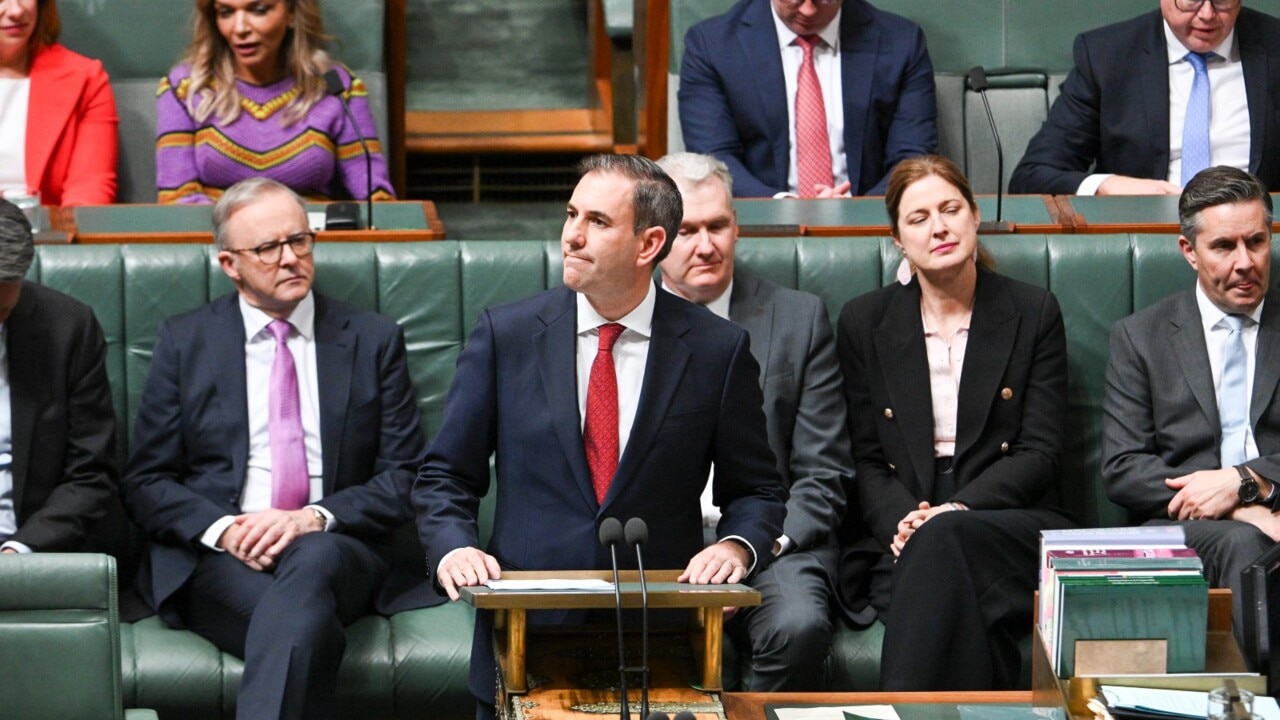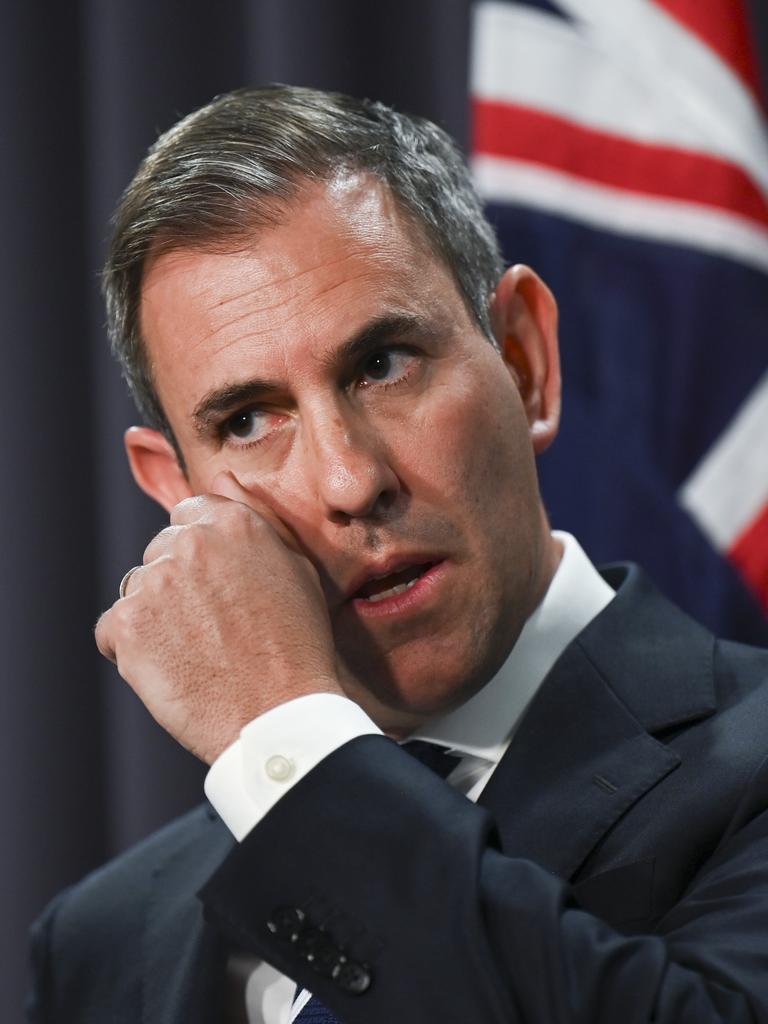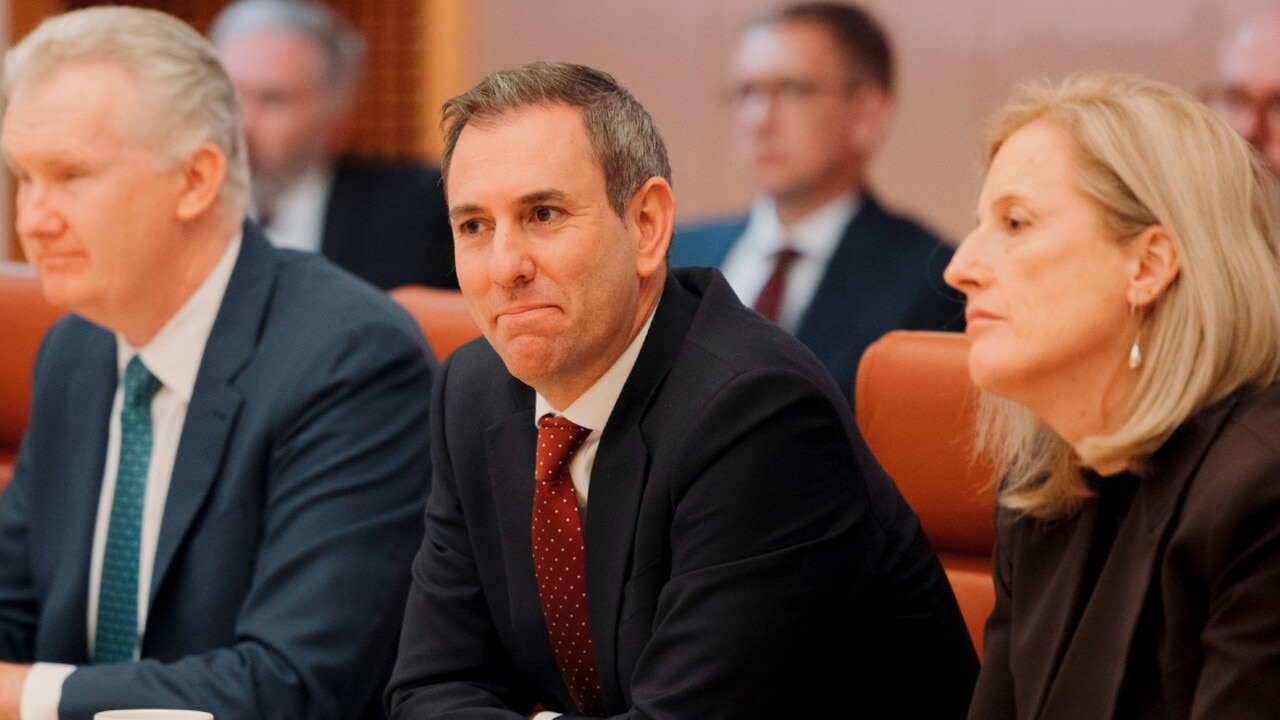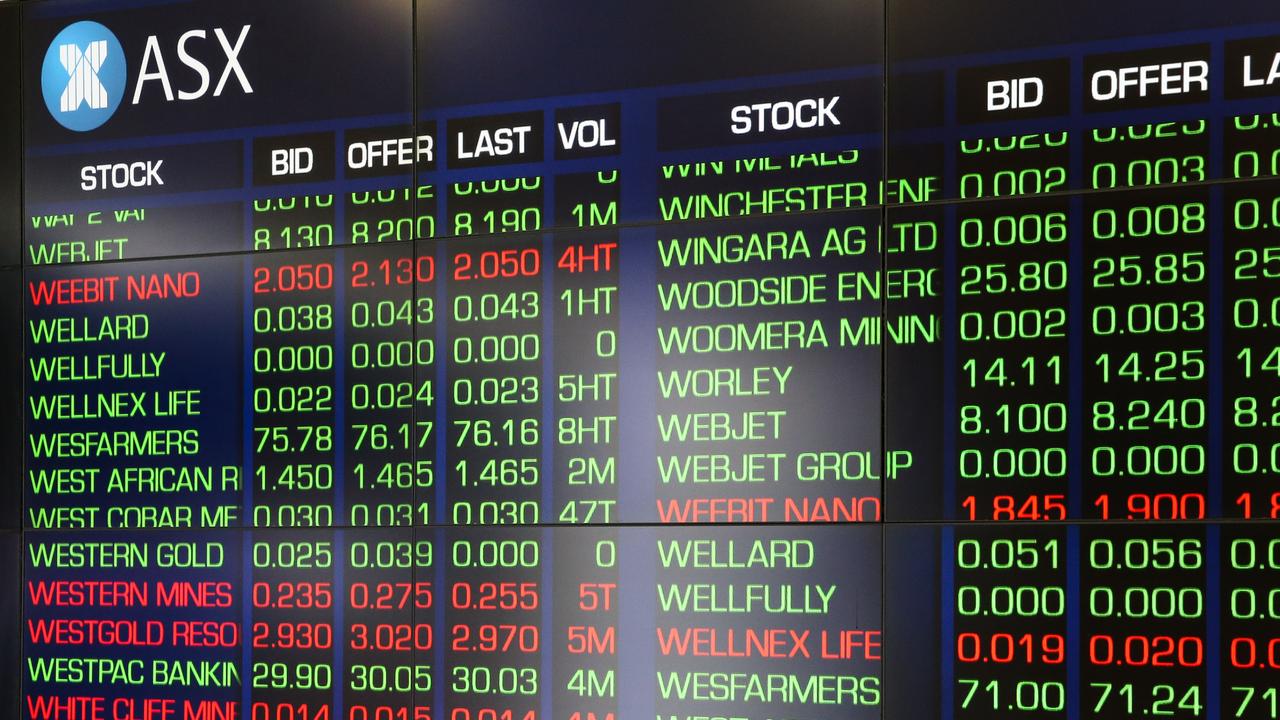GDP figures for June quarter show growth at 0.2 per cent
As inflation and cost of living pressures continue to bite, Australians have been hit with some news they didn’t really need to hear.

Business
Don't miss out on the headlines from Business. Followed categories will be added to My News.
The Australian economy has grown by a paltry 0.2 per cent for the June quarter, effectively its worst performance since the end of the 1990s recession.
The figures released by the Australian Bureau of Statistics on Wednesday showed GDP grew weakly thanks mainly to government spending, but with a fall in spending by households.
For the year-on-year growth, seasonally adjusted, GDP was just 1.0 per cent.
“The Australian economy grew for the 11th consecutive quarter, although growth slowed over the 2023-24 financial year,” ABS head of national accounts Katherine Keenan said.
“Excluding the Covid-19 pandemic period, annual financial year economic growth was the lowest since 1991-92 – the year that included the gradual recovery from the 1991 recession.”
GDP per capita was down for the sixth consecutive quarter, falling 0.4 per cent.
Household spending fell 0.2 per cent detracting 0.1 percentage points from GDP growth.
“ANY GROWTH WELCOME”: CHALMERS
Federal Treasurer Jim Chalmers, who earlier this week warned the economy was being “smashed” by high interest rates, acknowledged the economy was grinding along.
But he urged people to look at the bigger picture, saying “any growth” was welcome.
“Two thirds of the OECD have seen their economy go backwards at least one quarter, so in the context of a really difficult global economic environment, any growth in our economy is welcome growth,” he told reporters.
“Now, without government spending or without government spending growth, there’s been no growth in the economy at all.”
He said helping people “under a lot of pressure” with the cost of living was the highest priority of the Albanese Labor government.


“The cost-of-living pressures are still acute, they would be worse without the cost of living help that we are rolling out in a substantial and meaningful, deliberately broad and deliberately targeted way, and in a responsible way.”
Mr Chalmers said the figures backed the government’s economic plan to fight inflation, which sits at 3.8 per cent – above the Reserve Bank’s 2-3 per cent target band – and is keeping interest rates high.
The official cash rate is 4.35 per cent and the board is unlikely to cut it at its next board meeting on September 24.
FISCAL APPROACH “VINDICATED”
Mr Chalmers said the government’s economic judgment had been “vindicated” by Wednesday’s GDP figures.
“These national accounts give us more confidence in the economic judgments we’ve made but we’re not complacent about the soft landing we’re working towards,” Mr Chalmers said.
“We know there’s more to do because people are still doing it tough, but we’re making substantial progress when it comes to the budget and the economy.”
He played down his recent comments about interest rates that were widely seen as a thinly veiled shot at the Reserve Bank.

“To get on top of inflation, we and the RBA have slightly different objectives but they are aligned when it comes to seeing inflation moderate further and faster,” he said.
He said RBA Governor Michelle Bullock had “her job to do” and he had his, adding that it was “so important” to balance tackling inflation with giving cost-of-living relief.
“We maintain this primary focus on inflation but we need to be focused on the fact that the economy is soft and I think the data we get today has vindicated that approach,” he said.
PUBLIC SPENDING VITAL TO “WEAK” ECONOMY
Public spending was vital to the meagre GDP growth, according to the data, with the federal government pumping record amounts of cash into the likes of social services and public sector wages.
Asked how long public spending could prop up economic growth, Mr Chalmers said it was not something he wanted to “pre-empt”.
“It has made a really important contribution here,” he said.
He stressed that “restraint” was necessary, but “that in the context of an economy which is quite weak, and especially weak once you take public final demand out of it.”
“18 MONTHS IN HOUSEHOLD RECESSION”: OPPOSITION
The opposition was quick to attack the government’s handling of the economy, saying it had led to “an extraordinary collapse in living standards”.

“The government’s economic failures are coming home to roost,” shadow treasurer Angus Taylor said.
“This is the sixth consecutive quarter now of household recession. The sixth consecutive quarter of negative GDP per capita, that is 18 months our economy has been in a household recession.
“What is also clear is that Australian households are really suffering as they crack open the piggy bank, savings have almost disappeared for Australian families.”
He said the private sector also “is going backwards.”
HOWARD NOT “OBJECTIVE”
Mr Chalmers responded to criticism from John Howard, saying the former Liberal prime minister “deserves better” than to be “rolled out” by the opposition.
“I do respect John Howard and I think he’s certainly earned the right to express a view about some of these sorts of things,” he said.
“I think, frankly, John Howard deserves better than to be rolled out every time that Peter Dutton and Angus Taylor can’t carry an economic message.
“And John Howard, to his credit, wouldn’t have vacated the field on the economy the way that Peter Dutton and Angus Taylor have.”
Mr Howard had said the government gave the RBA “no alternative” other than to hike interest rates to curb inflation.
RATE CALL RBA GOT WRONG: ECONOMIST
Deloitte Access Economics partner Stephen Smith said the June figures showed “many Australians” are in recession and the RBA’s use interest rate to control inflation was failing.
“This release is further evidence that the November 2023 interest rate hike by the RBA was unnecessary,” Mr Smith said.
“Australian consumers are suffering from higher interest rates and cost of living pressures, while the rate of housing investment remains in the doldrums.
“Businesses are also suffering, with insolvencies on the rise. Growth is being propped up by government spending.
“There is simply not enough demand in the Australian economy to justify the RBA’s claim about ‘homegrown’ inflation. Another rate rise would cruel the economy.”
GDP DETAILS FROM THE ABS
The ABS said households cut spending on many discretionary categories in the June quarter. “This followed a relatively strong result in the March quarter, which included a number of sporting, gambling and music events,” Ms Keenan said.
“The strongest detractor from growth was transport services, particularly reduced air travel.”
Furnishings and household equipment rose (+4.0 per cent) as households took advantage of end-of-year sales. This was partly offset by food (-1.0 per cent) with households spending less on groceries.

“National non-defence spending drove the growth this quarter and grew for the seventh consecutive quarter.
The rise in June was due to continued strength in social benefits programs for health services. State and local expenditure also contributed to growth with a rise in employee expenses,” Ms Keenan said.
The June quarter also saw export prices fall 3.0 per cent – driven by bulk commodity prices, particularly coal and iron ore – while import prices were flat.
This was the second consecutive quarter export prices declined due to falling commodity prices and was again reflected in the decline in mining profits.
More Coverage
Originally published as GDP figures for June quarter show growth at 0.2 per cent







